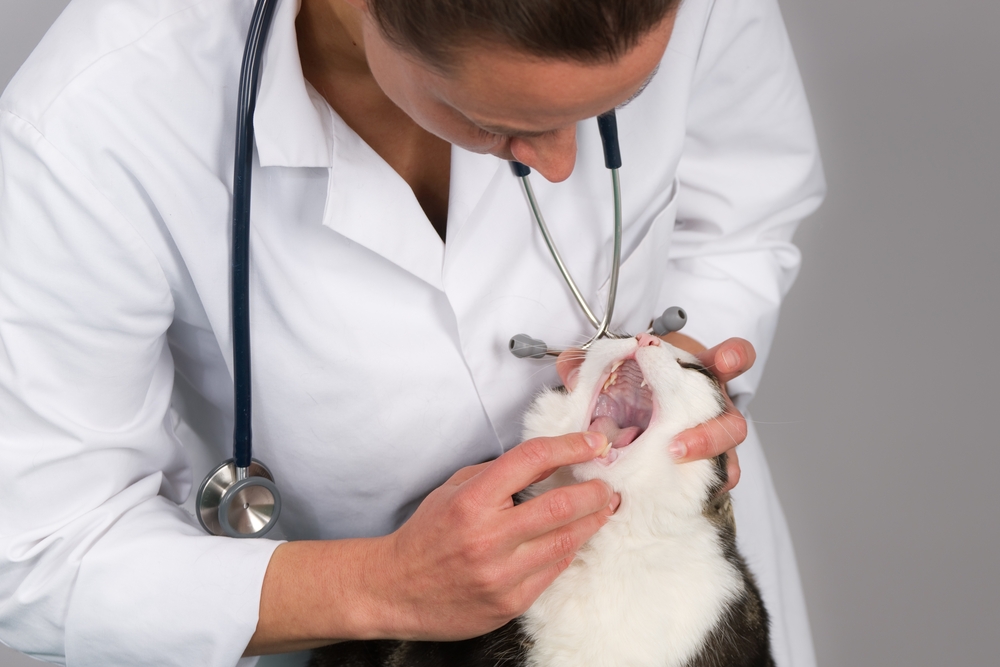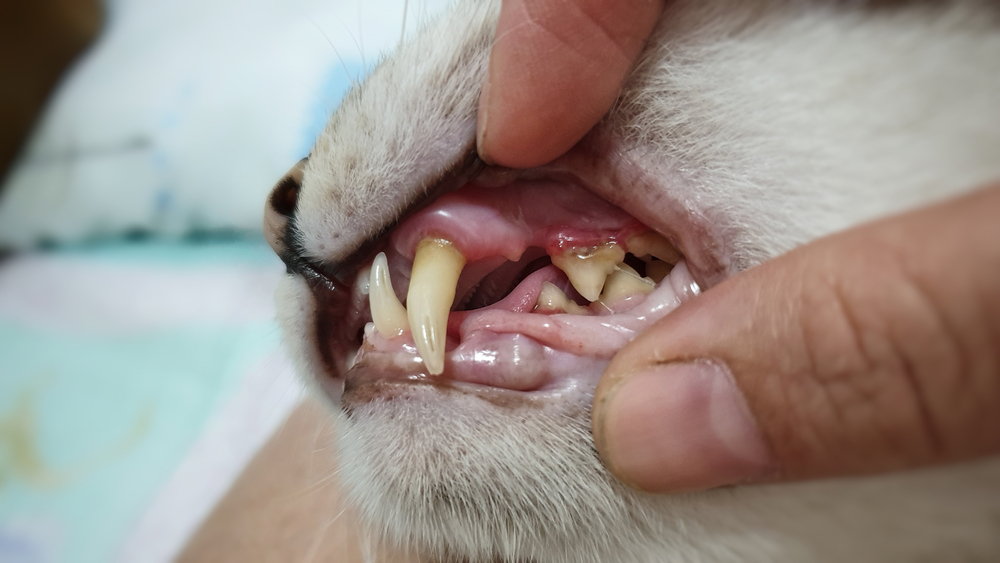
Imagine your mouth always being inflamed, making eating difficult and downright painful. Sadly, this problem—known as feline stomatitis—occurs in 0.7% to 10% of the general cat population. Feline stomatitis has been known by many names, and most recently is being referred to as feline chronic gingivostomatitis (FCGS). This debilitating, inflammatory condition affects the mucous membranes inside a cat’s mouth, and makes eating extremely painful and difficult. To help prevent cats from suffering from this serious disease, our Livermore Family Pet Hospital team answers common questions about feline stomatitis.
Question: What is stomatitis in cats?
Answer: Stomatitis is inflammation of the mucous membranes in the mouth that can spread deeper into submucosal tissues. The inflammation, which typically progresses to affect the mouth, gums, and upper throat, is incredibly painful.
Question: Why does stomatitis occur in cats?
Answer: Stomatitis develops as a result of an inappropriate, inflammatory immune response in the mouth. Researchers have presented many possible stomatitis triggers in cats, including coinfection with feline calicivirus (FCV), feline leukemia virus (FeLV), feline herpesvirus, feline immunodeficiency virus (FIV), and Bartonella henselae, but recent studies found no association between viral shedding and stomatitis.
However, more research is needed to assess all the potential factors that could cause stomatitis in cats. Currently, plaque bacteria stimulating the immune system, even in miniscule amounts, is the consensus. Since such a small bacterial population can trigger inflammation, preventing oral inflammation in cats with stomatitis is virtually impossible.
Q: What signs will I see if my cat has stomatitis?
A: Because stomatitis is so painful, your cat will likely show signs of oral discomfort, including:
- Drooling
- Bad breath
- Weight loss
- Dropping food
- Reluctance to eat, despite appearing hungry
- Pawing at the mouth
- Excessive vocalization
- Poor grooming
- Irritable or withdrawn behavior
If you typically feed your cat a canned diet of highly palatable food, you may not notice signs until the disease has progressed. Cats fed a dry diet show pain much earlier in the disease process.

Q: How is stomatitis diagnosed in cats?
A: Diagnosing stomatitis in cats typically requires sedation or general anesthesia. Since stomatitis is so painful, visualizing the full extent of oral inflammation is difficult on an awake cat. We may be able to quickly glance inside the mouth when a cat hisses in discomfort and spot inflamed oral tissues, but a comprehensive exam requires sedation.
We may also perform the following tests to check for other diseases, and to determine the extent of stomatitis:
- Blood work to check for organ dysfunction, viral and bacterial diseases, and hormone abnormalities
- Dental X-rays
- Gum biopsy
Q: What is the best treatment for feline stomatitis?
A: Successful stomatitis treatment requires minimizing oral bacteria, which typically means extracting the cat’s teeth in the inflamed areas. While some cats tolerate twice-daily toothbrushing and oral rinses to knock down the oral bacterial load, the vast majority do not. Because eliminating oral bacteria through daily at-home care and frequent professional cleanings is so difficult, tooth extraction is the best treatment path. In some cases, full-mouth extractions are necessary to make the cat comfortable.
Q: How should I care for my cat after a stomatitis diagnosis?
A: After your cat has been diagnosed with stomatitis, switch to soft food, if you haven’t already. A canned diet with a strong odor will most tempt your cat to eat. If possible, use an antiseptic mouthwash to reduce the bacterial load in your cat’s mouth. Pain and immunosuppressant medications may be necessary to keep your cat comfortable. If your cat will not eat or drink, they may require hospitalization for intravenous fluids through a feeding tube.
Typically, tooth extractions will be required as stomatitis progresses. While extracting your cat’s teeth may seem harsh, they will be much more comfortable and generally do not have issues eating, drinking, or grooming after oral surgery.
Q: What happens if my cat does not respond to full-mouth extractions?
A: Extracting teeth has shown to be an effective cure in 55% of cases, markedly improving 35% of patients, and generating no improvement in 10% of cats. If your cat still has oral inflammation after all their teeth and supporting structures have been removed, medical management may help keep them comfortable. Treatment focuses on reducing inflammation and may include:
- Feeding a canned, novel protein diet
- Immunosuppressant medication
- Anti-inflammatory medication
- Pain medication
- Immune stimulants
- Stem cell therapy
Cats with stomatitis can suffer incredible pain, so schedule an appointment immediately with our Livermore Family Pet Hospital team if you notice your cat showing signs of oral pain.

